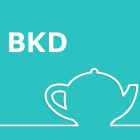While I posted this recipe on Substack the other day, Grant is insistent that I don’t lose it, so I’m also writing it up here.
Grant was born in Falkirk, a town in the central lowlands of Scotland within the county of Stirlingshire, about 23 miles northwest of Edinburgh and about 21 miles northeast of Glasgow. Back then, it wasn’t known for much other than historic battles, but nowadays, it’s all about the engineering – namely, the Kelpies and the Falkirk wheel.


Grant’s mother, hailing from the Govan side of Glasgow, carried her Scottish culture with her even after living in Australia for almost 50 years. Her strong Glaswegian accent remained unchanged until her passing in 2020. ‘We don’t part with anything,’ she’d say, ‘even our accents.’
She was a nervous flyer, so when Grant and I took her back to Scotland in 1995, she declared that would be the last time she’d be back—and so it was.
On that trip, she spoke a lot about the tastes she missed and was disappointed not to be able to source some of her childhood treats in the towns we visited. One of those treats was City Bakeries coffee buns.
By the end of the 1930s, City Bakeries were one of Glasgow’s leading chains of bakeries and tearooms with 60 branches – second only to Lyons as the UK’s largest retail baker of the time. As an aside, I haven’t yet given up hope that my branch of the Lyons family isn’t associated with that Lyons family. (Jokes, of course we aren’t, but how cool and appropriate would it be if we were???)
Now, this is where things get a tad confusing—many of the tea treats (or teabreid) of the time were sold as coffee buns even though they contained no coffee. The name came from the fact that they were meant to accompany a cup of coffee, not because they tasted of it. It’s like Yorkshire Teacakes, which contain no tea and are actually spiced buns similar to hot cross buns that are meant to be eaten with tea.
Anyways, City Bakeries produced these spiced, almost cake-like biscuits that tasted of coffee (via coffee essence). The stores began to close in the early 1990s and are now gone.
This recipe, the one below, originated in a Glasgow cookbook from the 1930s. It was updated by the Glasgow Times and then, more recently, by Ali Stoner, aka @rovinghaggis, and Grant says that when he bit into one, it reminded him of visiting his grandparents in Stirling when he was a boy in the 1960s.
A note on the coffee – I’m that person who, if we go out for coffee, will probably order black tea. While I love the smell of coffee and occasionally will have one at the beach after our walk, I don’t enjoy the taste of strong coffee in desserts. There’s about a nip of espresso in these biscuits and rather than tasting strongly of coffee, it hums along in the background with the spices.
Anyways, without further ado, here’s the recipe.
Scottish Coffee Buns
Makes 10 buns
· 60g softened butter
· 50g brown sugar
· 1/8 tsp each of cinnamon, ground cloves and ground cardamom
· 1/2 tsp vanilla bean paste or vanilla extract
· Pinch of salt
· 1 egg at room temperature
· 45ml strong coffee
· 120g plain flour
· 1 tbsp rice flour
· 1 tsp baking powder
· 50g currants
Preheat the oven to 180C fan (that’s 200C conventional) and line a baking sheet/cookie tray/whatever you call it.
Beat the softened butter and sugar until light and creamy – I used handheld electric beaters rather than a stand mixer. Add the spices, vanilla, salt and the egg and beat again. If the mix looks like separating, add a tablespoon of flour to help it all emulsify. Add the coffee and, you guessed it, beat till incorporated. Mix through the currants, then sift in the rice flour, plain flour, and baking powder and mix well.
Make 10 mounds onto a baking sheet, dividing the mixture roughly. Don’t be too precious about this. Bake for 15 minutes until they’re nicely browned. They don’t look at all attractive, but they do taste good.


American coffee cake is like that too; there is no coffee in the recipe but it’s meant to be eaten alongside coffee. I don’t like coffee but don’t mind the taste in sweet treats like cookies, cake, and ice cream.
LikeLiked by 2 people
All right now I want an English Teacake!
LikeLike
It is so much fun when you can recreate and long lost favorite.
LikeLike